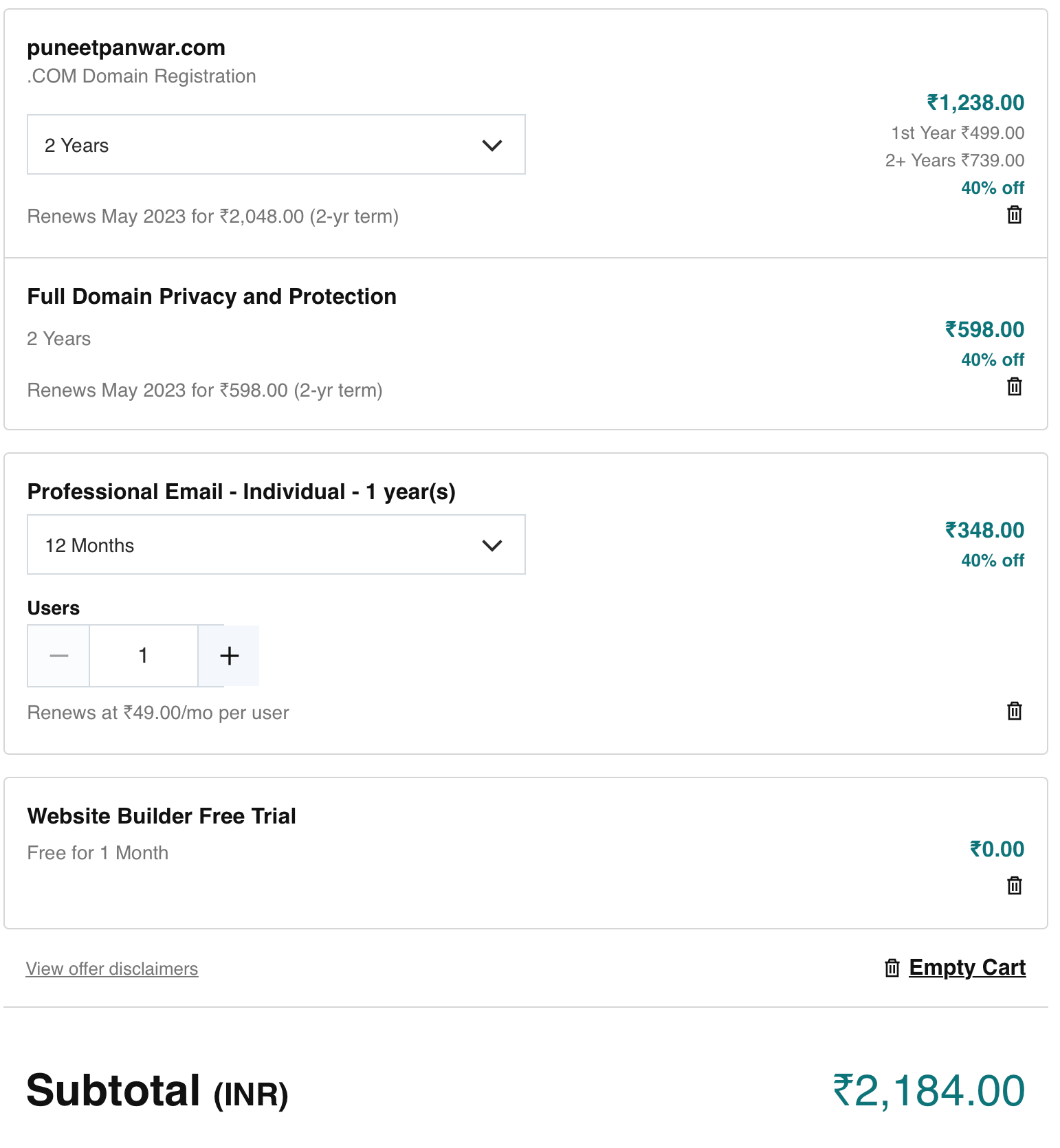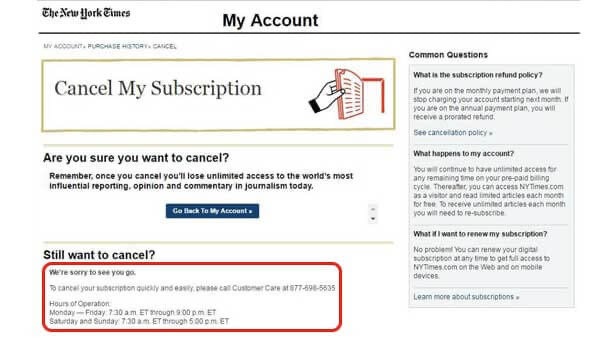Dark patterns are the carefully crafted tricks used by websites to make you do things you didn’t intend for like buying insurance, signing up for recurrent bills etc.

There are different types of dark patterns used by website interface designers, a few of them are listed as follow:
1. Sneak into Basket: This is a method where websites try to make you buy more than what you intended for. This is usually done by sneaking an additional item into your basket. For example, I wanted to buy a website domain with my name i.e. puneetpanwar.com, one of the hosting websites initially shows a fee of Rs. 499/year.

When I add the domain name into my basket and proceed to final payment, the total amount reaches Rs. 2184 as shown in the Figure below. This is a classic example of Sneak into Basket technique where the hosting website is trying to sell me additional products which I never intended for.

2. Trick Questions: In this dark pattern, the websites uses intricate wordings to confuse the user so that he/she ends up taking actions desired by the website.
3. Roach Motel: A Roach Motel design provides an easy path to get in but an extremely complicated path to get out.This usually occurs when the user can easily sign up for a service but closing the service is difficult. For example, To cancel the subscription of The New York Time, a user needs to call during specified business hours which is far difficult than purchasing the subscription.

4. Confirmshaming: this is an act of guilting user when they choose to decline for a service/offer. The option to decline the offer is worded in such a way as to shame the user into compliance.

5. Bait and Switch: in this pattern, the users think that their action will have a certain outcome, but instead, a completely different and undesirable outcome occurs. For example, in real estate, some brokers advertise a property at a too-good-to-be-true price to attract (bait) the potential buyers and once they are on board the property is either unavailable at the same price or the broker tries to sell some other property.
6. Privacy Zuckering: here the users are tricked to share more information about themselves than they intended for. Harry Brignull named this dark pattern after Facebook’s CEO Mark Zuckerberg.
7. Misdirection: this is a practice where websites try to direct the user towards an option that will result in more business value for the company. For example, most airline companies heavily promote their “extra legroom” or “upfront” seats.
8. Forced Continuity: this pattern is found on many subscription-based services where when your free trial with a service is over and your credit card starts getting charged without any warning. The user is forced to enter the credit card details even if he only wants to experience the free trial.
The next time you come across such content or websites following these practices, feel free to JUDGE THEM and SHAME THEM for using these tricks to fool you.
To know more about this topic, please go through the initiative by Harry Brignull (https://www.darkpatterns.org) to raise public awareness about deceptive digital practices.
Thank you for reading.